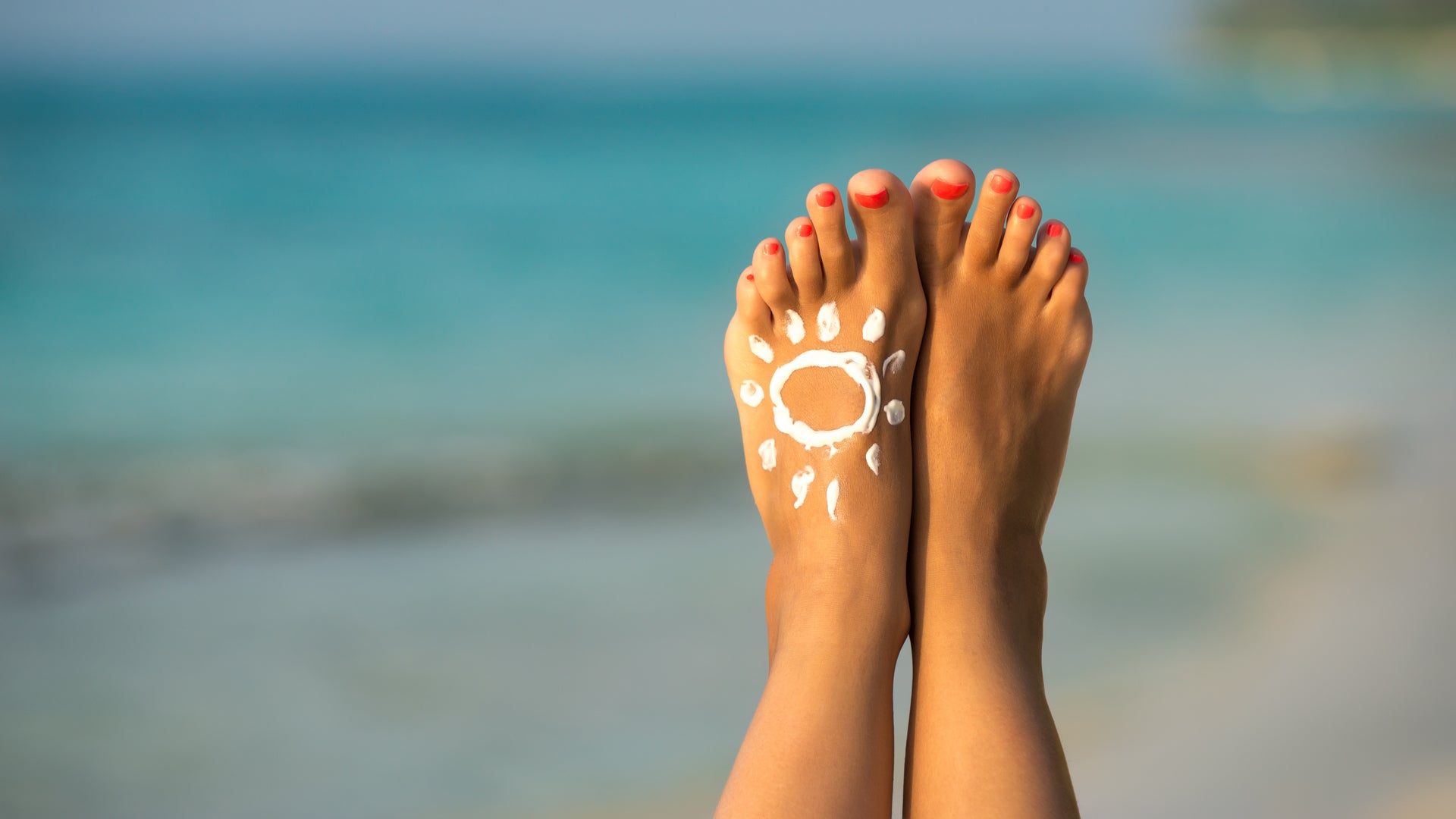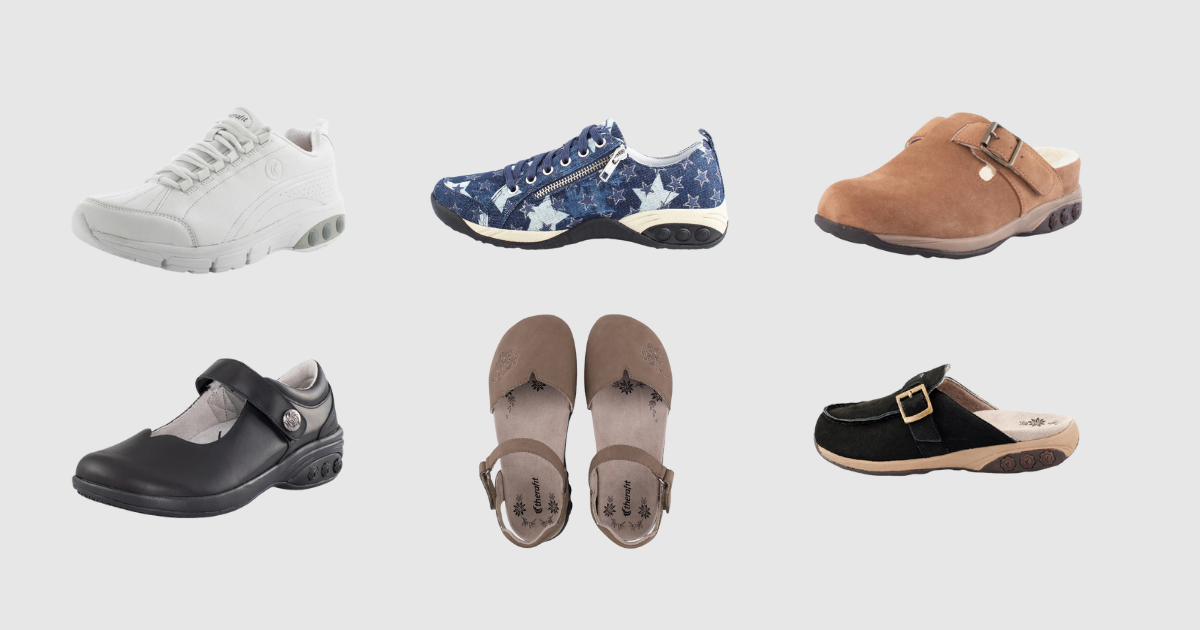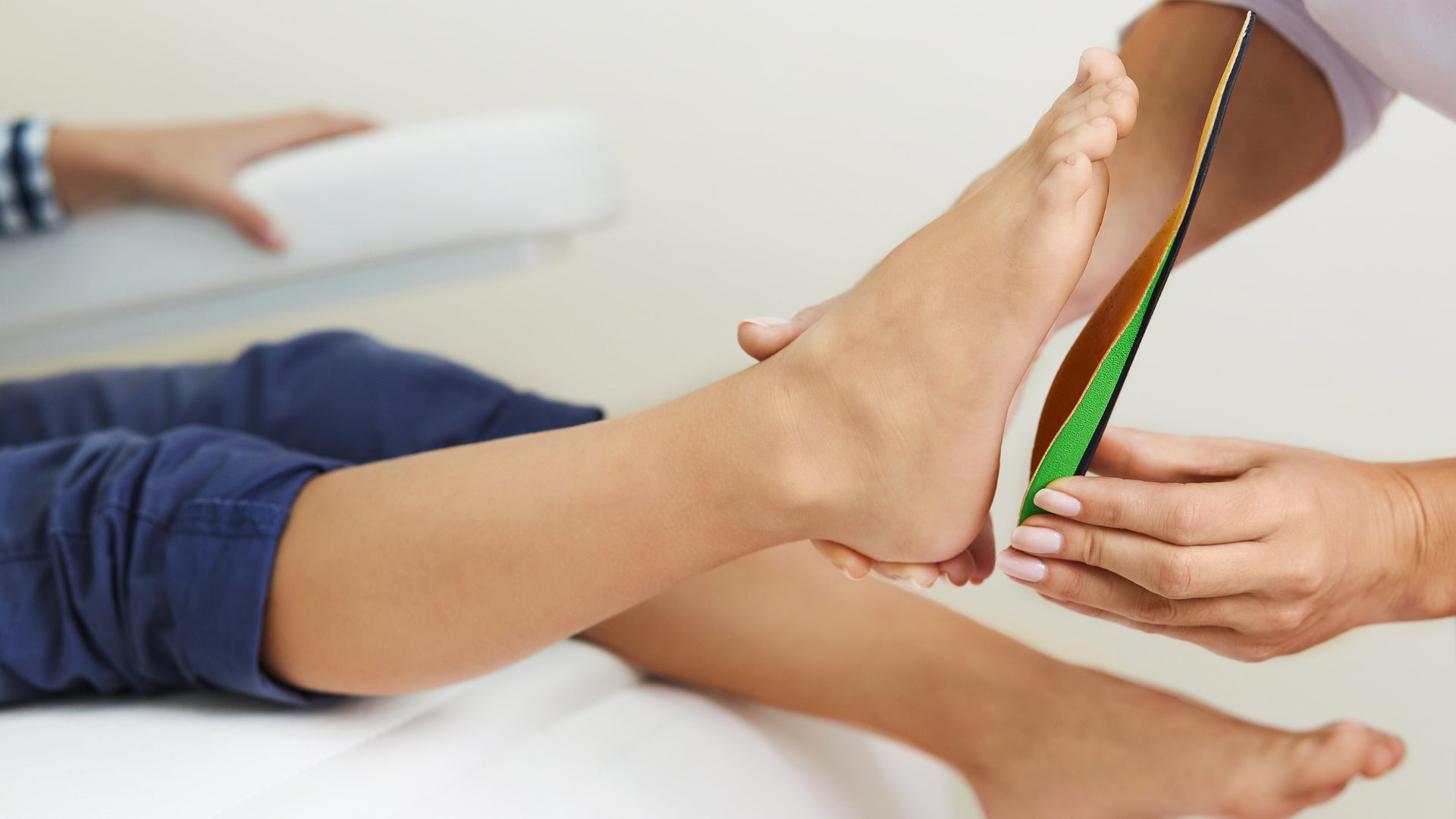Sunscreen for your feet: The ABCDs of Foot Melanoma

Labor Day’s just around the corner and the weather’s already starting to get chilly up north, but for the year-round sunshine states (and for those who are already planning safe socially-distanced vacations), did you know your feet need sunscreen too?
Most of us know we’re supposed to wear sunscreen on all skin that’s exposed to the sun, but skin cancer can actually develop anywhere on the body, including our feet. Most skin cancers of the foot are pretty painless, so they can be a bit harder to detect — but often there’s a history of recurrent cracking, bleeding, or ulceration. Ouch.
Usually, folks discover that they have skin cancer only after tending to something unrelated that’s nearby the affected area on the foot. It’s a sneaky little thing.
So what causes skin cancer anyway? Whelp, the sun. But skin cancers of the feet are different in that often, the cause isn’t just direct sun exposure, but can be related to viruses, exposure to chemicals, chronic inflammation, or something inherited. It’s a bummer, but the skin of the feet is often overlooked during routine medical examinations, so it’s kind of important that you check your it regularly for any abnormalities, and visit your podiatrist if you see something that looks a bit strange (they’re the ones uniquely trained to recognize and treat any abnormalities in the region).
You can learn the (literal!) ABCD’s of melanoma, and if you notice a new mole, bump, or patch that meets any of the following criteria, book an appointment with your podiatrist immediately.
- Asymmetry - If you’ve got a lesion and it’s divided in half, or if the sides don't match.
- Borders - If the borders of a lesion look scalloped, uneven, or ragged.
- Color - If you’ve got something going on around your skin where there’s more than one color, or where these colors have an uneven distribution.
- Diameter – If the lesion is wider than a pencil eraser (or greater than 6 mm).
For non-melanoma related skin cancers, look for any spontaneous ulcers and non-healing sores, bumps that crack or bleed, nodules with rolled or “donut-shaped” edges, or scaly areas.
It’s important to not only look for these abnormalities, but do what you can to prevent them as well. The good news is prevention of skin cancer on the feet and ankles is pretty similar to any other body part! Limit sun exposure, make sure to apply plenty of sunscreen when you’re outside and your feet and ankles are exposed, and check the area regularly for any new freckles or moles. If you’re wearing sandals, wearing ones that cover the majority of your skin helps too, like the Carmel, the Cassandra, and the Olivia .



